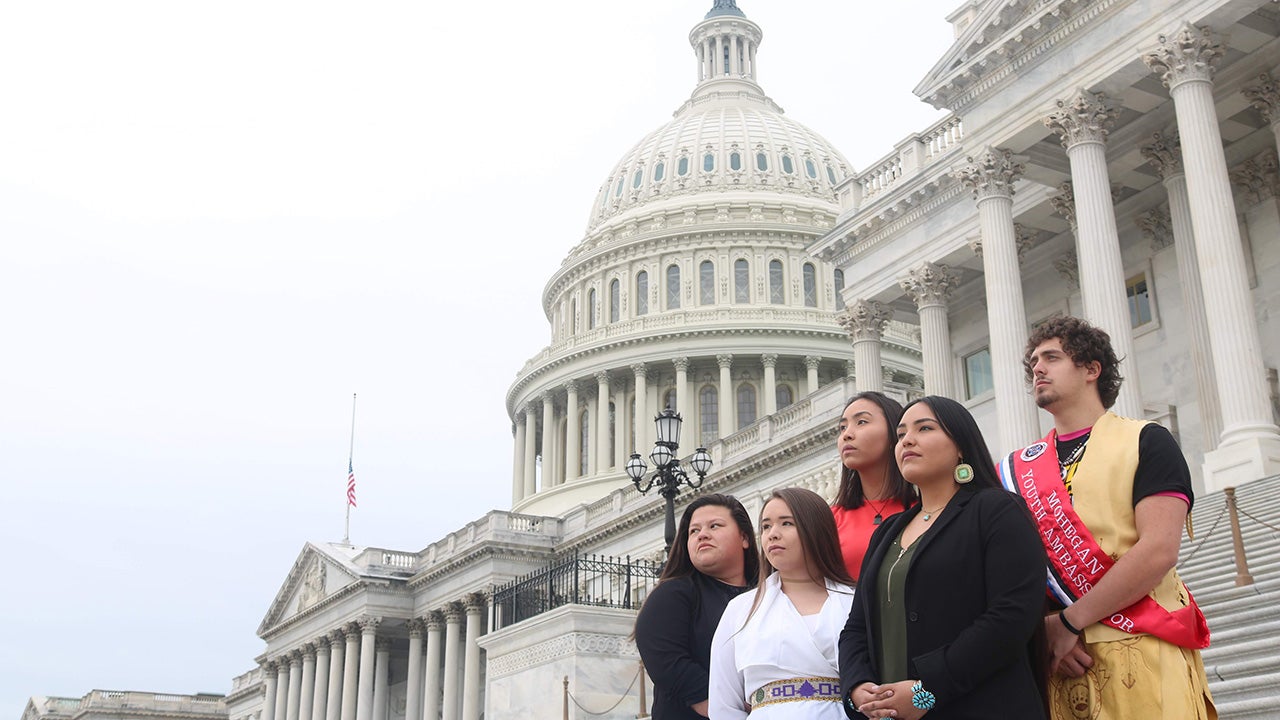When I was a child, I would accompany my mother to local government meetings at the Oljato Chapter House in my home community of Monument Valley, Utah. There I would listen to my relatives talk about the issues facing the Navajo Nation. As I grew older and watched people leave our community in search of something better, I wondered why we did not have the resources to improve our environment—a way to make our home better instead of looking for a better home.
Then and now, the lack of infrastructure is a major barrier. Roughly 170,000 people are living on the Navajo Nation. Unemployment is consistently at 50 percent, and 38 percent of households are below the poverty line. Thirty percent of households do not have running water in their homes, 30 percent lack access to electricity, and only 4 percent have broadband access. More than three-quarters of households experience food insecurity. There are only 13 grocery stores across the entire Navajo Nation, which covers 27,000 square miles of land stretching into Arizona, Utah, and New Mexico. The systems that are in place simply do not allow our people to lead the lives they deserve and do not allow us prosperity on our own terms.
But we won’t get there simply by digging wells and building supermarkets or building roads to services in which we are only consumers without control. Instead, we must build a family-centered infrastructure—one which builds towards a society where families have autonomy over the trajectory of their lives.
On the surface, infrastructure consists of the physical things we see and experience every day such as health care facilities, transportation systems, electric and water systems. It includes the buildings, personnel, and equipment needed to keep our communities running. Too often we have seen buildings go up on the reservation only to decay into dilapidation because these pieces of infrastructure were not built for or by the community. They were intended to cater not to our families, but to tourism, churches, and temporary organizations. When those entities move on, we are left to clean up the mess.
Family-centric infrastructure would also include non-tangible aspects that are present in our day-to-day lives—cultural wellbeing, access to communication, and the overall means to building healthy families and communities. These are the things a community needs to not just survive but to thrive. This infrastructure protects the health and well-being of individuals; provides opportunities for personal, cultural, and professional growth; and allows space for innovation within the community. In the case of the Navajo Nation communities, it also includes funding to support cultural wellbeing and sustainability through language preservation and traditional practices, and through healthy family support including youth programming and mental health services.
Indigenous, women-led grassroots organizations are one of the most effective ways to bring resources into our communities and can be the catalyst for rebuilding. For the Navajo Nation, a historically matriarchal society, our strongest leaders and the heads of the households are our Diné women. Our communities have become unbalanced due to the colonial influences that have pushed women aside and forced our communities to function under an oppressive foreign system. As a co-founder of the Navajo & Hopi Families COVID-19 Relief Fund, I had the honor of being a part of a movement to restore the balance and reintroduce Diné women’s leadership into our communities.
Diné women’s leadership has always been about family, ké, and using this as the foundation of societal improvements will be the key to implementing effective infrastructure in our communities. This means creating more room at the table when deciding where to allocate funding. Planning and building must include grassroots organizations, local governments, and the cultural networks that exist on the Navajo Nation, and must cut through the red tape that repeatedly hinders our progress. The leaders of our government meetings—the ones I attended as a child—must be empowered to make recommendations, set priorities, and channel infrastructure spending to the places it will most benefit our community.
If we do not have a say in how we build and rebuild, and for whom we are building this better future, then we will continue to see our disparities grow. This is not only true for communities on the Navajo Nation, but for all oppressed communities who have experienced the same barriers of inequity, environmental racism, and growing disparities, and who have seen “infrastructure” projects—dams, highways, even hospitals—used to oppress and segregate.
While infrastructure requires big thinking, there are no universal solutions. Infrastructure spending must take into account how new systems and networks integrate with the communities and cultures that it is built to serve. The goal must be to create infrastructure that benefits our families, equips our most talented with the resources to foster their innovation, and ultimately restores the balance in our communities.
Shandiin Herrera is a proud member of the Navajo Nation. She is a co-founder of Yee Ha’ólníi Doo d.b.a. Navajo & Hopi Families COVID-19 Relief Fund. In 2019, Shandiin was named a Champion for Change by the Center for Native American Youth at the Aspen Institute.

